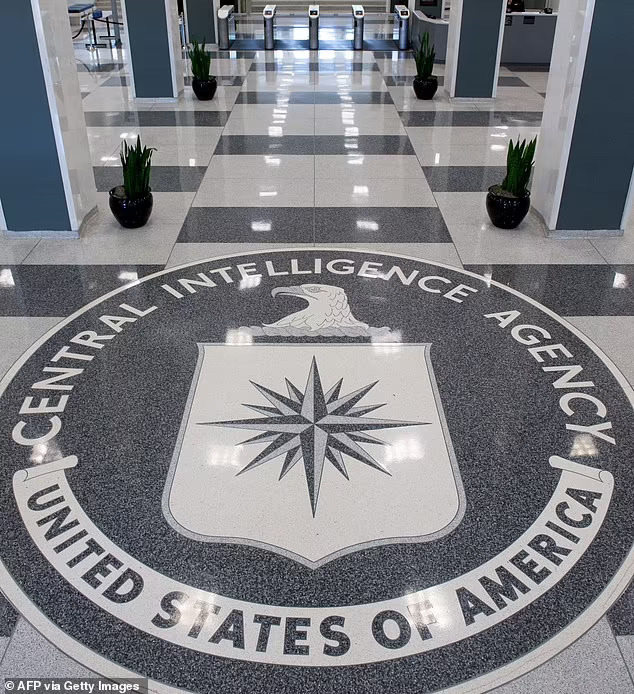The Central Intelligence Agency (CIA) is poised to unveil its proprietary iteration of ChatGPT, aimed at scouring the digital landscape for valuable insights and potential security concerns. An artificial intelligence program developed by the CIA is slated for deployment across the 18 intelligence agencies within the United States government.
This strategic move is prompted by mounting concerns that China has established dominance in the global technological arena. Despite reservations about the comprehensive understanding of AI, Randy Nixon, the head of the CIA’s AI division, expressed unbounded optimism, asserting that its potential knows no bounds, limited solely by financial constraints.
The CIA’s forthcoming introduction of an AI tool, reminiscent of ChatGPT, is designed to facilitate the meticulous scrutiny of copious data reserves, assisting ongoing investigative pursuits. Crafted to emulate the renowned OpenAI technology, this latest initiative from the Central Intelligence Agency seeks to empower analysts by granting them enhanced access to open-source intelligence, according to agency insiders.
The driving force behind this endeavor is the CIA’s Open Source Enterprise division, responsible for the development of this groundbreaking technology. The aspiration is to propagate its implementation across the expansive landscape of the United States government’s 18 intelligence agencies, a strategic move aimed at countering China’s burgeoning capabilities in the realm of intelligence.
Randy Nixon, Director of the CIA’s AI division, articulated the evolving landscape of data analysis, encapsulating the transition from traditional media formats to the contemporary era of big data. He remarked, ‘We have traversed the trajectory from print media and radio to print media and television, followed by print media and cable television, leading to the era of basic internet, and culminating in the era of big data, an inexorable progression.’
Nixon underscored the magnitude of the challenge posed by the vast expanse of data permeating the digital landscape, a challenge that the AI program is primed to tackle. He emphasized the imperative of discerning crucial information within the data deluge, stating, ‘We must unearth the proverbial needles in the haystack.’
The impetus to integrate artificial intelligence into the fabric of the U.S. military and intelligence apparatus arises from the escalating need to rival China’s burgeoning influence on the global stage. China’s ambition to assume global leadership in artificial intelligence by 2030 has sparked apprehensions, as documented by Bloomberg.
A disconcerting glimpse into China’s utilization of AI manifested in 2021 when the nation introduced a ‘prosecutor’ AI program boasting an astonishing 97 percent accuracy in identifying and pursuing charges. In stark contrast, America’s law enforcement agencies have faced criticism for their struggles in harnessing the potential of AI in investigative endeavors. Nevertheless, Nixon expressed optimism that the new AI program will aid in streamlining the assimilation of the unprecedented volume of digital information traversing the internet.
Among the array of capabilities offered by the CIA’s AI tool is the capacity to trace the origin of any information under scrutiny. Nixon highlighted that, akin to ChatGPT, the program will enable agents to extract information in the most concise manner possible through a chat interface.
He elaborated, ‘Subsequently, you can elevate the interaction to a more advanced level, engaging in dialogue and posing inquiries to the machines, soliciting well-sourced responses.’ He affirmed that their data repository has the potential to expand limitlessly, constrained solely by financial considerations.
Nixon assumed the role of Director of the CIA’s Open Source Enterprise division in January, tasked with accelerating the agency’s advancement in open-source intelligence, a domain that has garnered increasing concern and fostered rivalry in Washington, according to Intelligence Online.
China’s fervent embrace of artificial intelligence has raised concerns that the United States may lag behind, a concern accentuated by the nation’s introduction of an AI news anchor earlier in the year. To bolster its ever-expanding AI infrastructure, the CIA’s division will purportedly amalgamate data from publicly available and commercially accessible sources.
However, the drive to incorporate AI into intelligence gathering transpires against a backdrop of lingering uncertainty surrounding the technology’s inherent vulnerabilities, including the potential for CIA data to be accessed via the open internet. While the program will remain inaccessible to Washington’s lawmakers, Nixon affirmed its forthcoming deployment across all 18 intelligence agencies within the U.S. government, including the FBI, NSA, and all military branches.
In August, the Department of Defense initiated a task force dedicated to exploring the potential applications of this technology, with an emphasis on comprehending its shortcomings. Months earlier, in May, Gilbert Herrera, Director of the NSA, disclosed to Bloomberg that the intelligence community was still grappling with ‘finding a method to harness the advantages of these extensive models without compromising privacy.’
The CIA’s announcement of its new AI initiative left unanswered questions about the safeguarding of the amassed information, perceived as vulnerable due to the technology’s susceptibility. Nonetheless, Nixon underscored the exigency of keeping pace with the ceaseless deluge of data coursing through the digital realm.
He contended that the AI tool would revolutionize the modus operandi of analysts, enabling them.










Leave a Reply